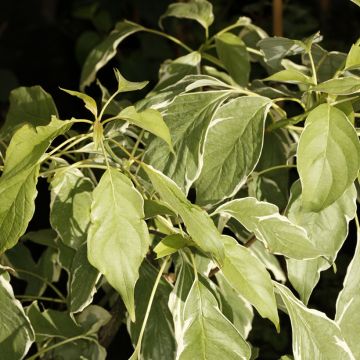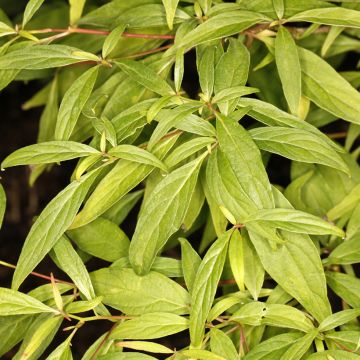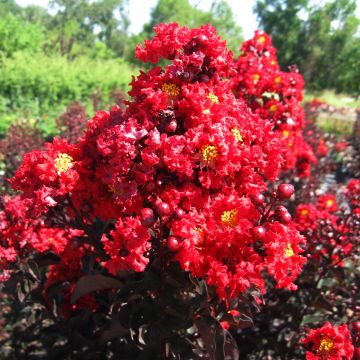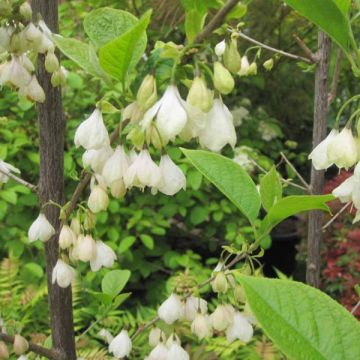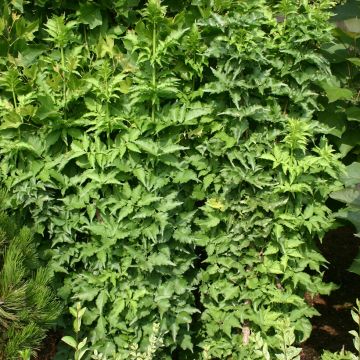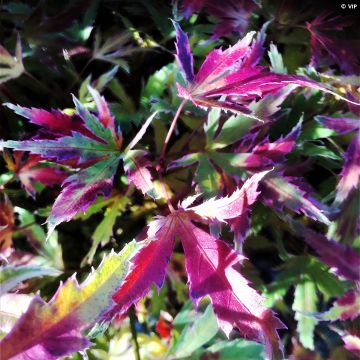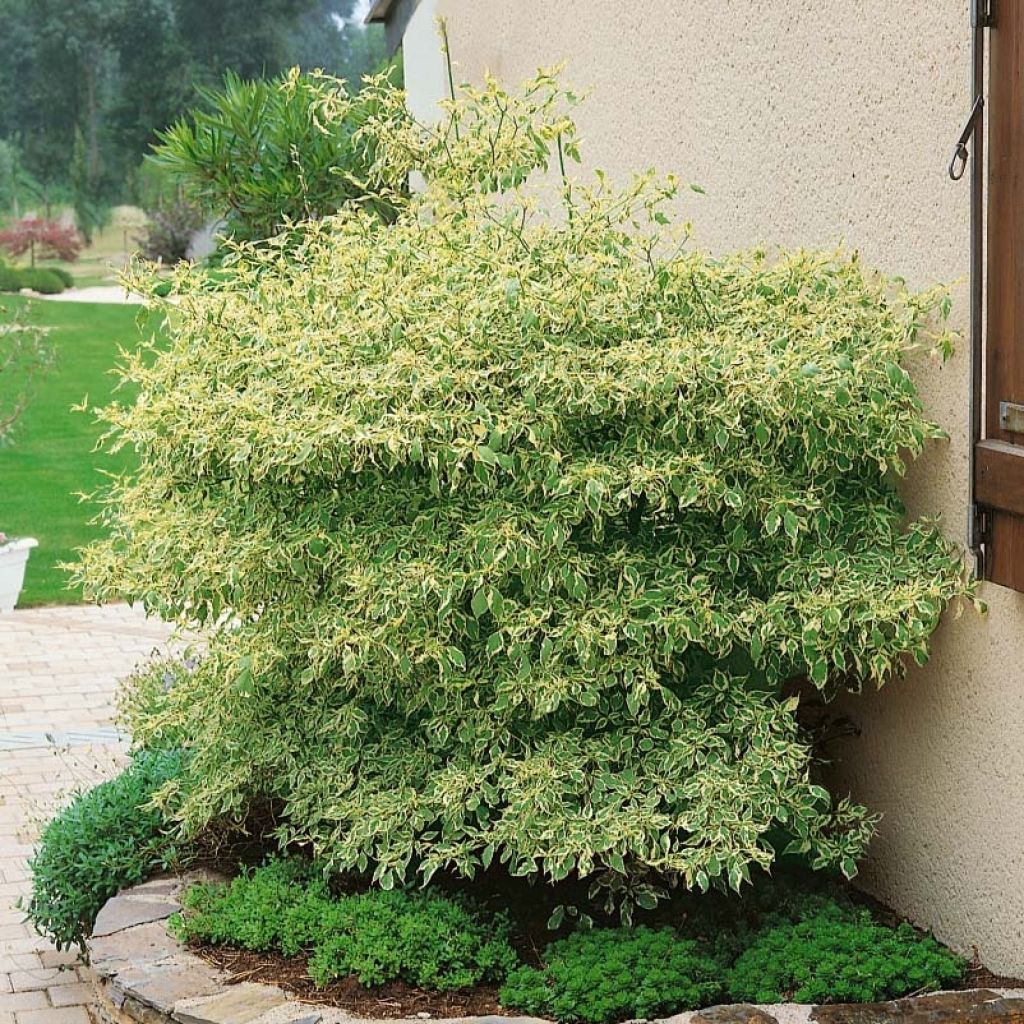

Cornus alternifolia Argentea - Pagoda Dogwood


Cornus alternifolia Argentea - Pagoda Dogwood


Cornus alternifolia Argentea - Pagoda Dogwood
Cornus alternifolia Argentea - Pagoda Dogwood
Cornus alternifolia Argentea
Pagoda Dogwood
This item cannot be shipped to the selected country
Delivery charge from €5.90
Delivery charge from €5.90
Oversize package delivery charge from €6.90
More information
Delivery charge from €5.90
Delivery charge from €5.90
Oversize package delivery charge from €6.90
More information
Schedule delivery date,
and select date in basket
This plant carries a 24 months recovery warranty
More information
We guarantee the quality of our plants for a full growing cycle, and will replace at our expense any plant that fails to recover under normal climatic and planting conditions.
From €5.90 for pickup delivery and €6.90 for home delivery
Express home delivery from €8.90.
From €5.90 for pickup delivery and €6.90 for home delivery
Express home delivery from €8.90.
Oversize package: home delivery by special carrier from €6.90 per order..
Express home delivery from €8.90.

Does this plant fit my garden?
Set up your Plantfit profile →
Description
Cornus alternifolia 'Argentea', also known as alternate-leaved variegated dogwood, is undoubtedly a fabulous bush. With its extraordinary foliage, variegated with white and turning red in autumn, which adorns its light and majestic silhouette, layered beautifully. Its structure is composed of floating branches, arranged alternately and almost horizontally. The flowering in June is white and discreet. Winter reveals the reddish bark of its well-structured branches. It only fears drought and can tolerate ordinary, moist soil and sunny exposure.
Cornus alternifolia 'Argentea' belongs to the Cornaceae family. It is the variegated form of Cornus alternifolia, native to North America, from western Newfoundland to southern Manitoba and from Minnesota and the south to northern Florida and Mississippi. There, it is found in clear undergrowth, clearings, and the edges of moist forests. The selection 'Argentea' has an upright and spreading habit, taller than wide. It is a delicate and elegant bush, reaching a height of 3m (10ft) with a spread of 2.5m (8ft). Its growth is quite fast. The branches, covered in dark reddish bark with age, are arranged alternately on the trunk, with horizontal growth. The deciduous foliage is composed of entire, elliptical and ovate, alternate leaves, distinctly veined and undulate, measuring approximately 8cm (3.1in) in length. They are grey-green with wide white margins on the upper side, bluish underneath, and turn reddish-purple in autumn. Flowering is not its main feature, rather discreet, in the form of small white-yellowish flowers arranged in cymes, attracting bees. It is followed by fruiting in 8mm (0.3in) diameter drupes, containing oily seeds that turn blue-black when ripe.
Regardless of the size and style of the garden, there will always be a dogwood to provide a beautiful decoration. The alternate-leaved variegated dogwood will merit being planted as a standalone, where its beautiful silhouette will stand out against a darker background. It offers a renewed spectacle throughout the year, but its significant development makes it suitable for the background of large flower beds, mixed hedges, or on the edge of woodlands to create a transition with the countryside. Its association with Helianthus, Heliopsis, or daylilies will create a very colourful scene. As it is a bush that thrives near water, it can be installed with Cornus stolonifera 'Faviramea' with yellow bark and Cornus alba 'Sibirica Variegata' behind a foreground of Astilbes to create a variegated scene near a pond. In a different setting, this bush will be well highlighted in front of a modern and minimalist architecture.
Cornus alternifolia Argentea - Pagoda Dogwood in pictures
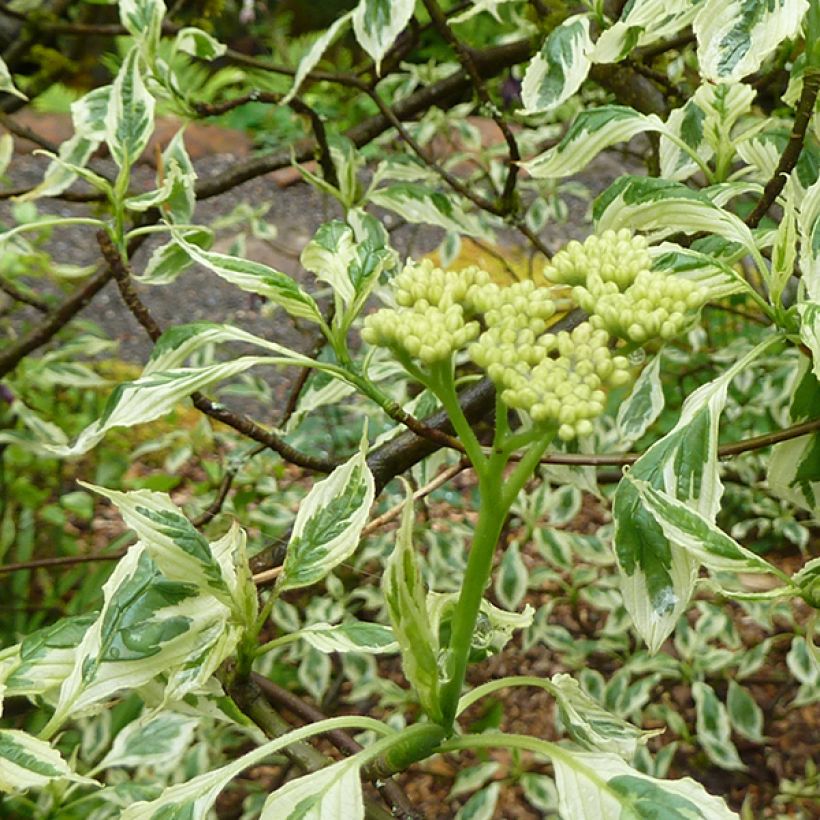





Plant habit
Flowering
Foliage
Botanical data
Cornus
alternifolia
Argentea
Cornaceae
Pagoda Dogwood
Cultivar or hybrid
Other Cornus
Planting and care
Cornus alternifolia 'Argentea' will thrive in a moist, fertile and humus-rich soil, even in heavy and slightly calcareous soil. Plant it from November to March, outside of frost periods, in a sunny position to enhance the foliage colours, or alternatively in bright partial shade. From February to April, before the start of vegetation, you will prune at a minimum: remove diseased or dead wood and crossing branches to keep only the most vigorous ones and maintain an elegant habit.
Planting period
Intended location
Care
Trees for small gardens
Haven't found what you were looking for?
Hardiness is the lowest winter temperature a plant can endure without suffering serious damage or even dying. However, hardiness is affected by location (a sheltered area, such as a patio), protection (winter cover) and soil type (hardiness is improved by well-drained soil).

Photo Sharing Terms & Conditions
In order to encourage gardeners to interact and share their experiences, Promesse de fleurs offers various media enabling content to be uploaded onto its Site - in particular via the ‘Photo sharing’ module.
The User agrees to refrain from:
- Posting any content that is illegal, prejudicial, insulting, racist, inciteful to hatred, revisionist, contrary to public decency, that infringes on privacy or on the privacy rights of third parties, in particular the publicity rights of persons and goods, intellectual property rights, or the right to privacy.
- Submitting content on behalf of a third party;
- Impersonate the identity of a third party and/or publish any personal information about a third party;
In general, the User undertakes to refrain from any unethical behaviour.
All Content (in particular text, comments, files, images, photos, videos, creative works, etc.), which may be subject to property or intellectual property rights, image or other private rights, shall remain the property of the User, subject to the limited rights granted by the terms of the licence granted by Promesse de fleurs as stated below. Users are at liberty to publish or not to publish such Content on the Site, notably via the ‘Photo Sharing’ facility, and accept that this Content shall be made public and freely accessible, notably on the Internet.
Users further acknowledge, undertake to have ,and guarantee that they hold all necessary rights and permissions to publish such material on the Site, in particular with regard to the legislation in force pertaining to any privacy, property, intellectual property, image, or contractual rights, or rights of any other nature. By publishing such Content on the Site, Users acknowledge accepting full liability as publishers of the Content within the meaning of the law, and grant Promesse de fleurs, free of charge, an inclusive, worldwide licence for the said Content for the entire duration of its publication, including all reproduction, representation, up/downloading, displaying, performing, transmission, and storage rights.
Users also grant permission for their name to be linked to the Content and accept that this link may not always be made available.
By engaging in posting material, Users consent to their Content becoming automatically accessible on the Internet, in particular on other sites and/or blogs and/or web pages of the Promesse de fleurs site, including in particular social pages and the Promesse de fleurs catalogue.
Users may secure the removal of entrusted content free of charge by issuing a simple request via our contact form.


































